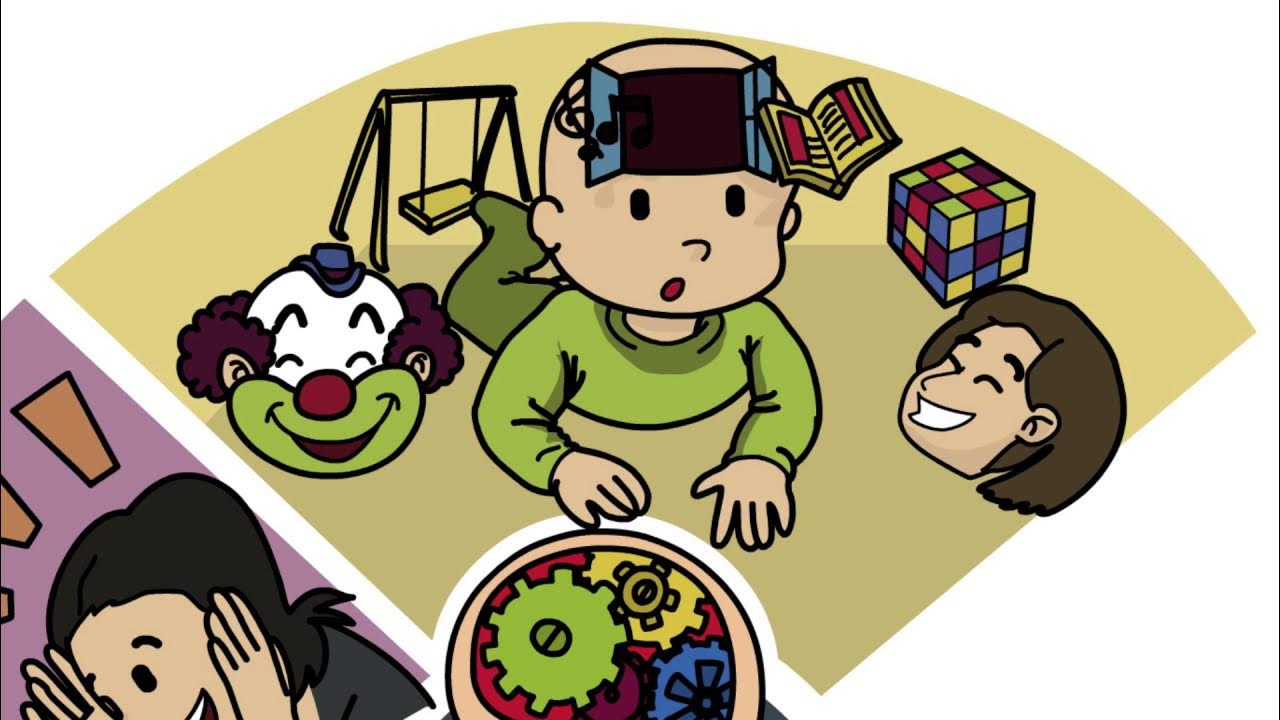Do This Daily To Improve Brain Development
Summary
TLDRThis video highlights the importance of early interactions in shaping your baby's brain development through a technique called 'serve and return.' By responding sensitively and attentively to your baby's cues, you help build essential neural connections that impact their learning, behavior, and emotional health. From birth, your baby's brain is creating millions of connections every second, and the way you engage with them can have lifelong effects. The video provides practical tips for interpreting baby cues and fostering responsive interactions to strengthen these connections, laying a solid foundation for their future well-being.
Takeaways
- 😀 Brain architecture development in babies is crucial for future learning, behavior, emotional, and mental health.
- 😀 The activities and interactions you have with your baby significantly impact their brain development, and these effects last a lifetime.
- 😀 Babies are born with the majority of their brain cells, but the connections between these cells are still developing during early childhood.
- 😀 Babies' brains create over a million neural connections every second during the first few years, and these connections are shaped by everyday experiences.
- 😀 Brain connections are pruned as the baby’s brain matures, keeping the strongest ones and eliminating less-used ones.
- 😀 The way you interact with your baby during their formative years shapes their brain, affecting their ability to think, act, and feel later in life.
- 😀 Research shows that sensitive and responsive parenting in early childhood can lead to larger brain volumes and more gray matter by age eight.
- 😀 'Serve and return' is a highly effective technique to provide sensitive and responsive care, helping build strong brain connections.
- 😀 Serve and return is similar to a game of tennis, where your baby serves by initiating an interaction and you return the serve by responding to them.
- 😀 Starting serve and return interactions early is beneficial as brain connections are forming from day one.
- 😀 While interpreting a baby’s serves can be tricky before six months, learning to recognize their subtle signs (like gestures and sounds) helps you respond appropriately and support their brain development.
Q & A
What is the most powerful thing you can do to positively impact your baby's brain development?
-The most powerful thing you can do is engage in regular, sensitive, and responsive interactions with your baby, such as using the serve and return technique.
Why is the development of brain connections crucial for babies?
-Brain connections are vital because they enable babies to move, think, communicate, and perform all basic functions. The formation of these connections is shaped by everyday experiences and interactions.
How many neural connections does a baby's brain make per second during the early years?
-A baby's brain creates over a million neural connections every single second during the early years.
What does the 'serve and return' technique involve?
-The 'serve and return' technique is a form of interaction where the baby 'serves' an action, like a smile or a gesture, and the caregiver 'returns' by reacting appropriately. This back-and-forth helps to build brain connections and fosters emotional and social development.
What impact does responsive parenting have on a child's brain development?
-Responsive parenting, where caregivers are sensitive to their child's cues and needs, leads to larger brain volumes, more gray matter, and thicker brain areas related to motor skills, sensory processing, and decision-making.
At what age should parents start using the serve and return technique?
-The earlier, the better! The serve and return technique can be used from day one as brain connections are forming from birth.
How does the serve and return technique work in practice?
-In practice, the baby serves by initiating a signal, such as a smile or reaching out, and the caregiver returns by acknowledging the signal and responding. The exchange continues until the baby indicates they are done.
How can parents interpret a baby's serves before they develop clear language?
-Before babies can use language, their serves may be harder to interpret. However, parents can learn to recognize signs of hunger, tiredness, or the need for attention through subtle cues like squirming, cooing, or eye contact.
What does the research by Koch and Collies demonstrate about early childhood care?
-The research by Koch and Collies found that children who received sensitive and responsive care during the early years had more advanced brain development by age eight, including larger brain volumes and thicker areas associated with key cognitive functions.
What are some challenges parents face when interpreting a baby's serves under six months of age?
-Under six months, interpreting serves can be challenging because babies often use the same gestures or expressions to convey different messages, like squirming when tired, hungry, or bored. Accurate responses are crucial for brain development.
Outlines

Cette section est réservée aux utilisateurs payants. Améliorez votre compte pour accéder à cette section.
Améliorer maintenantMindmap

Cette section est réservée aux utilisateurs payants. Améliorez votre compte pour accéder à cette section.
Améliorer maintenantKeywords

Cette section est réservée aux utilisateurs payants. Améliorez votre compte pour accéder à cette section.
Améliorer maintenantHighlights

Cette section est réservée aux utilisateurs payants. Améliorez votre compte pour accéder à cette section.
Améliorer maintenantTranscripts

Cette section est réservée aux utilisateurs payants. Améliorez votre compte pour accéder à cette section.
Améliorer maintenantVoir Plus de Vidéos Connexes

How Brains are Built: The Core Story of Brain Development

How a child's brain develops through early experiences

O NEURODESENVOLVIMENTO INFANTIL

Molly Wright: How every child can thrive by five | TED

5 Steps for Brain-Building Serve and Return

Early Years Resources: The Science of Early Childhood Brain Development
5.0 / 5 (0 votes)
